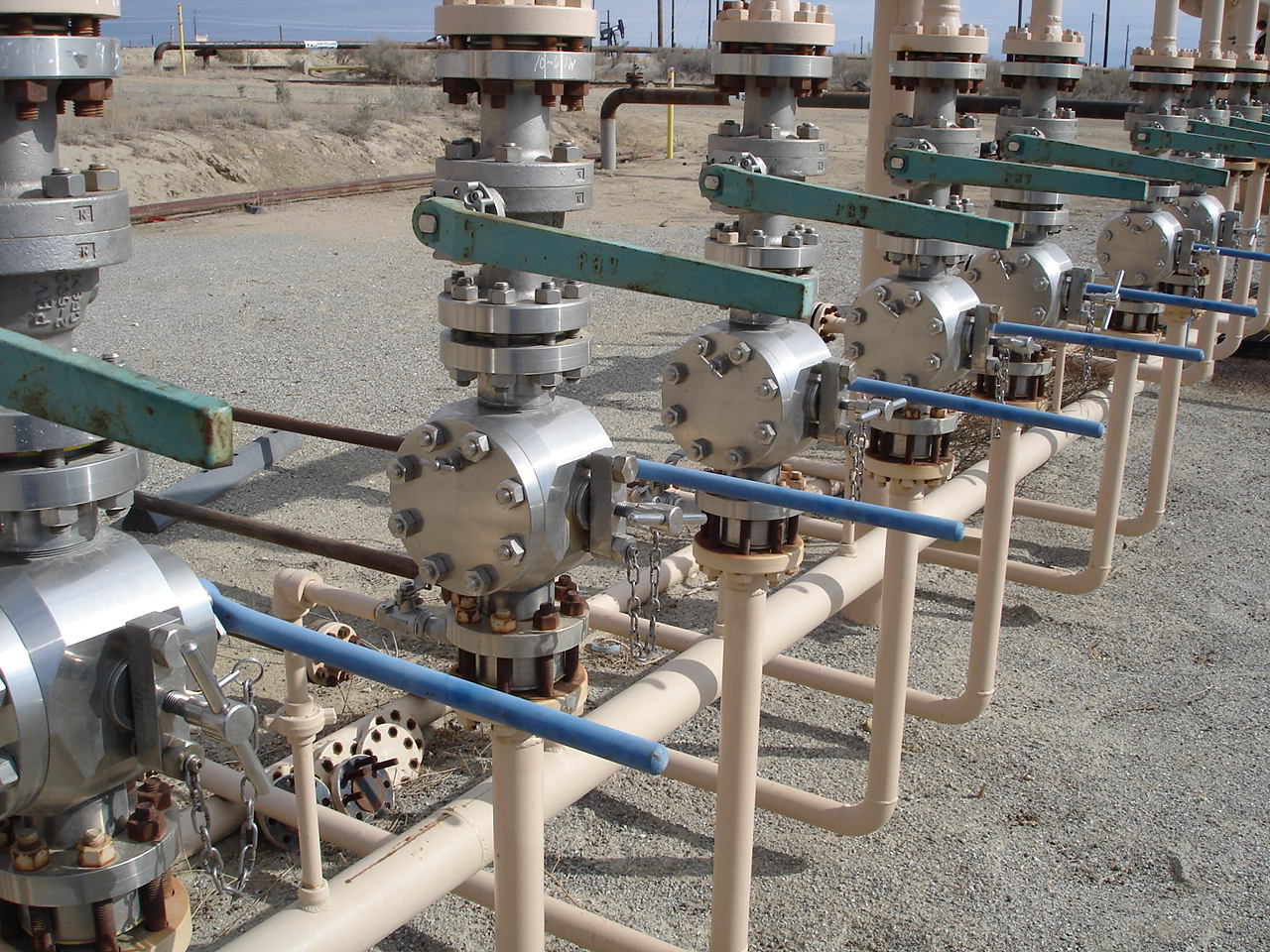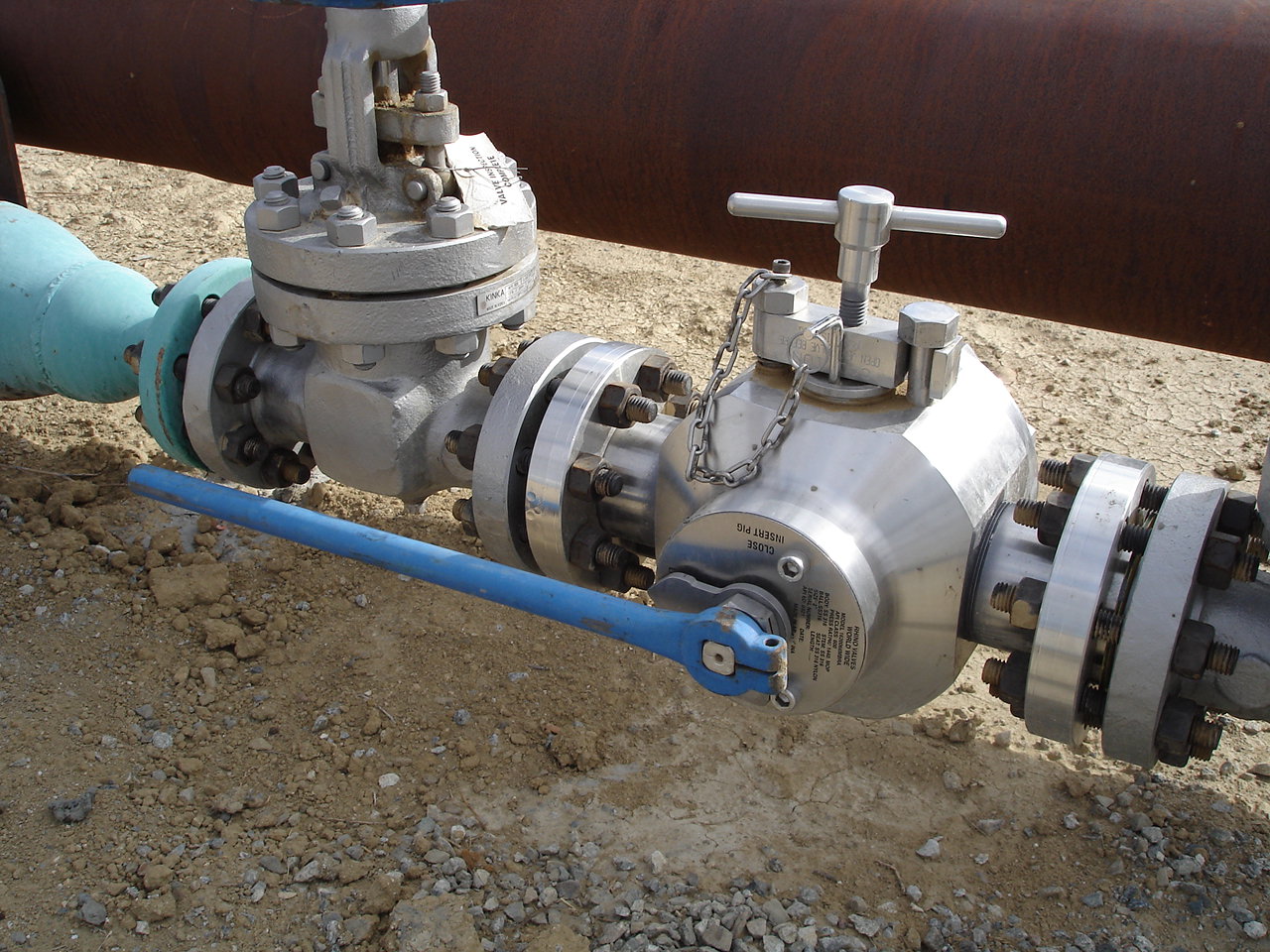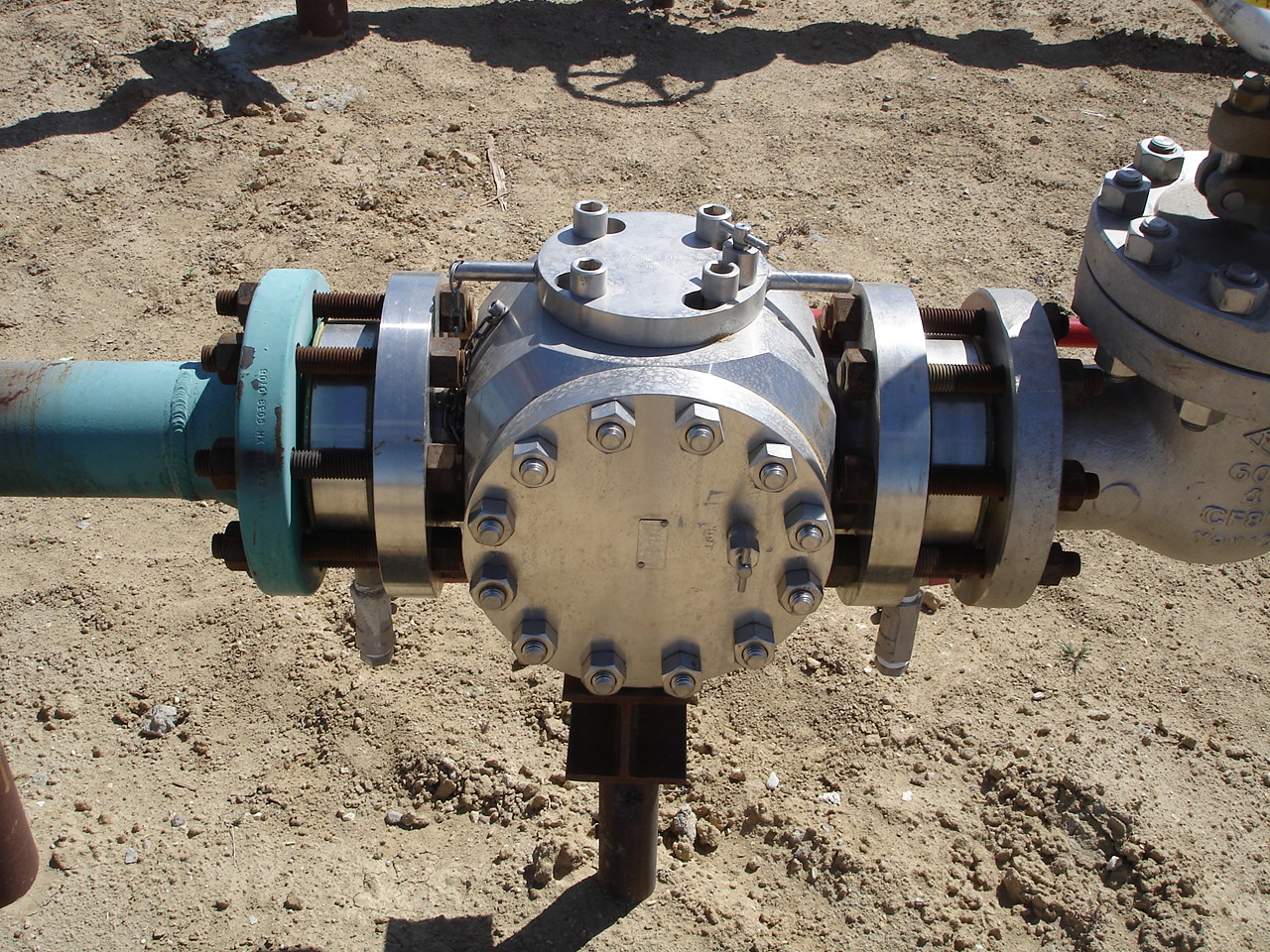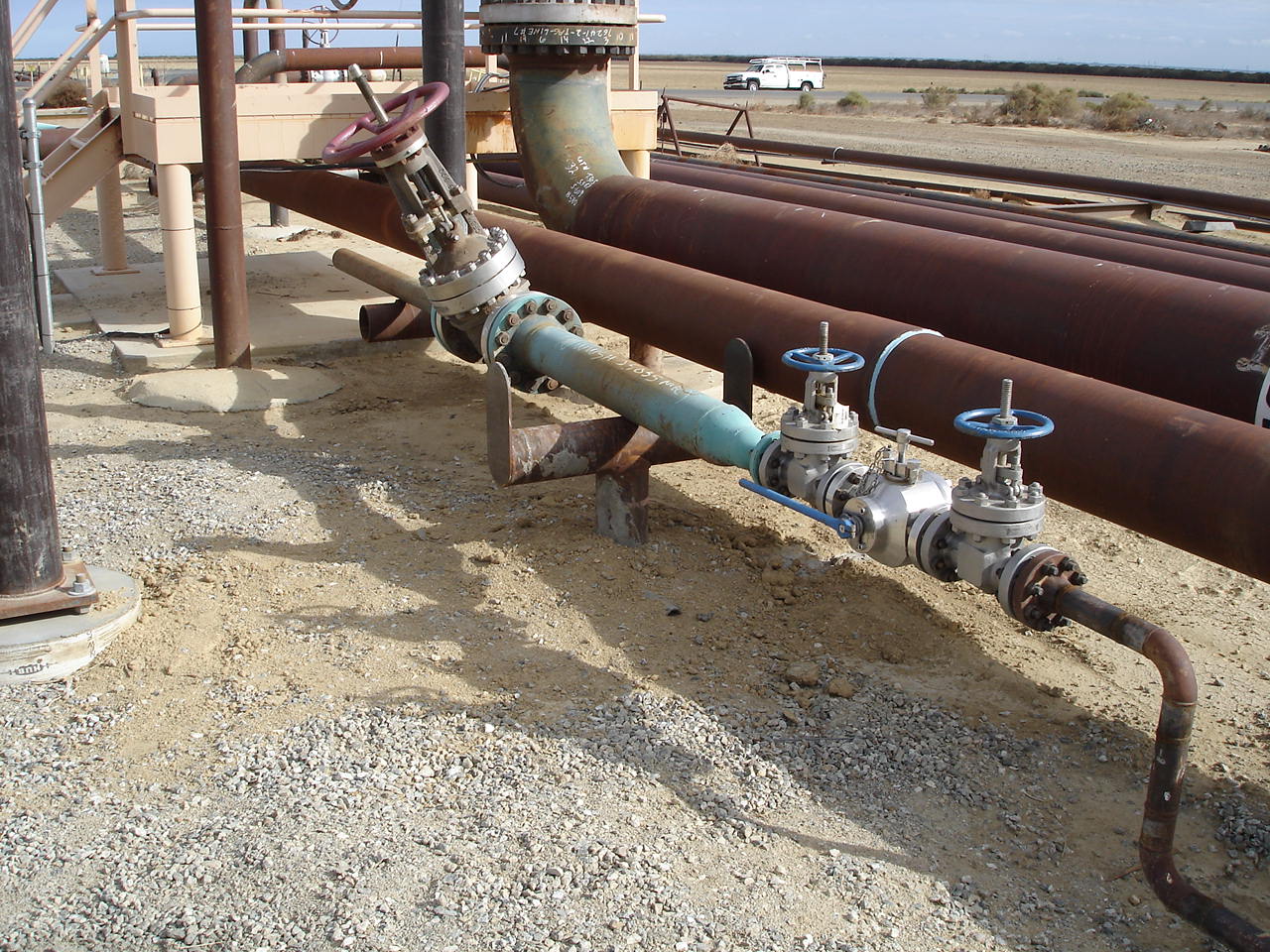


 A pigging valve is an alternative to conventional pig launchers. They are capable of launching and receiving foam, steel, and solid cast pigs in both cylindrical and spherical shapes. Original designs would only allow spherical shapes but machining innovations and technology have allowed for other shapes of pigs such as cups, disc, brushes and also foam pigs can be used. Pigging valves consist of an opening on the side of the valve that comes apart to allow for insertion or removal of the pig. Pig valves are designed to isolate the pressure portion of the line from the opening to protect the operator.
A pigging valve is an alternative to conventional pig launchers. They are capable of launching and receiving foam, steel, and solid cast pigs in both cylindrical and spherical shapes. Original designs would only allow spherical shapes but machining innovations and technology have allowed for other shapes of pigs such as cups, disc, brushes and also foam pigs can be used. Pigging valves consist of an opening on the side of the valve that comes apart to allow for insertion or removal of the pig. Pig valves are designed to isolate the pressure portion of the line from the opening to protect the operator.
Pig Valve Advantages and Disadvantages
|
|---|
| Advantages | Disadvantages |
|---|
- Pig valves are designed with features that allow for the easy insertion and retrieval of pigs into and out of pipelines. This is crucial for various maintenance activities, such as cleaning, inspecting, and separating product batches.
- Pigging operations, facilitated by pig valves, help minimize product contamination by removing residual fluids or debris from the pipeline. This is particularly important in industries such as food and beverage, pharmaceuticals, and petrochemicals.
- Pig valves are used in a variety of industries and applications, including oil and gas, water and wastewater, and process industries. They are versatile and can be adapted to different pipeline sizes and configurations.
- Pigging operations can be performed without completely shutting down the pipeline. This reduces downtime, allowing for more efficient maintenance and cleaning activities.
- Regular pigging operations can help maintain the efficiency of pipelines by removing built-up deposits, scale, or other contaminants that may impede the flow of fluids.
|
- Pig valves and pigging systems can involve an initial investment cost. The installation of pigging infrastructure, including pig valves, may require additional considerations during the initial design and construction phases.
- Pig valves can be more complex in design compared to standard isolation valves. This complexity may require additional attention during installation, maintenance, and repair activities.
- While pig valves themselves are crucial for pigging operations, they also require maintenance. Regular inspection and servicing are necessary to ensure that the valves function properly when needed.
- Pig valves are designed primarily for pigging operations and may not provide the same level of control as other types of valves. In some cases, additional valves may be needed for precise control over fluid flow.
- Pig valves need to be compatible with the specific pigs and pigging operations used in a particular pipeline. This may require coordination between the pig valve design and the type of pig being employed.
|
Overview of How Pipeline Pig Valves Operate
Pipeline pig valves, also known as pigging valves or pig traps, are designed to facilitate the launching and receiving of pipeline pigs during maintenance, cleaning, or inspection operations. It's important to note that the design and operation of pipeline pig valves can vary based on factors such as pipeline specifications, the type of pigs used, and the industry's requirements. Regular maintenance and proper operation of these valves are crucial for the efficient and safe functioning of pipeline pigging operations. The operation of these valves depends on their specific design and the needs of the pipeline system.
Launch Operation
- Loading the Pig - Before launching a pig, the pipeline pig valve is configured to allow the pig to be loaded into the launcher (the facility for introducing pigs into the pipeline).
- Sealing Mechanism - The valve often has a sealing mechanism to ensure that pressure is maintained in the pipeline while allowing the pig to pass through.
Pig Passage
- Bypass Ports - The valve may have bypass ports or channels that enable the pig to pass through without affecting the normal flow of the product in the pipeline.
- Controlled Release - The release of the pig is controlled to ensure a smooth launch into the pipeline.
Pipeline Pig Travel
- Product Flow Propulsion - Once launched, the pig is propelled through the pipeline by the flow of the product (liquid or gas) within the pipeline.
- Pig Design - Some pigs are equipped with their propulsion systems, such as brushes or cups, to create a seal with the pipeline walls, aiding in their movement.
Receiver Operation
- Capture Mechanism - The pig valve on the receiving end (receiver) is configured to capture the pig safely after it has completed its journey through the pipeline.
- Closure Mechanism - The receiver valve often has a closure mechanism to maintain pressure integrity while the pig is retrieved.
Pig Retrieval
- Safe Retrieval - The receiver valve is operated to safely retrieve the pig from the pipeline without affecting the integrity of the system.
Maintenance and Inspection
- Access for Inspection - Pig valves may provide access for inspection and maintenance of the pipeline.
- Sealing Integrity - The sealing mechanisms of the valves are designed to prevent leaks and maintain pressure during pigging operations.






